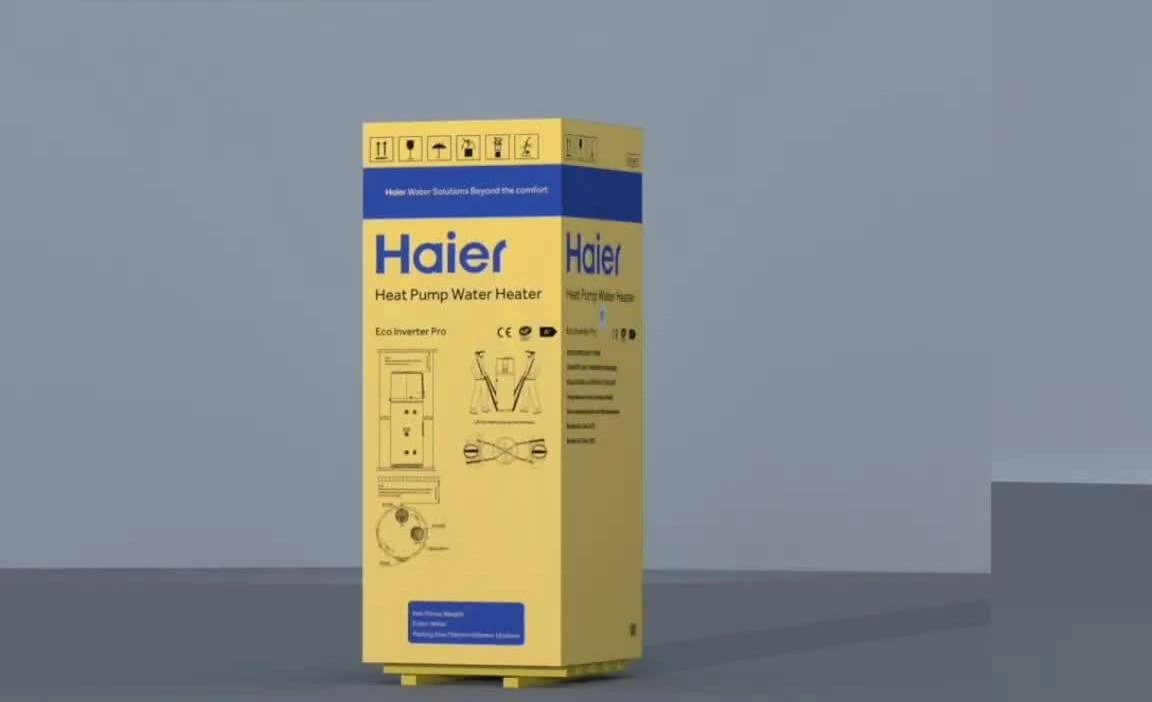This comprehensive guide provides a step-by-step installation process for the Haier R290 heat pump water heater. It covers crucial pre-installation checks, ensuring you have the correct tools, components, and sufficient space for optimal performance and easy maintenance. We'll guide you through the vital plumbing and electrical connections, emphasizing safety precautions and adherence to manufacturer specifications to prevent damage and ensure longevity. From preparing the unit and confirming its integrity to the final checks and operation, this guide leaves no stone unturned.Proper installation is key to maximizing the energy efficiency and lifespan of your Haier R290 heat pump water heater. We will cover aspects such as dielectric fitting installation to prevent corrosion, the crucial role of the safety valve, and the importance of proper condensate drainage and insulation. This guide also addresses essential electrical safety measures, including grounding and RCD requirements, along with recommendations for integrating photovoltaic systems. Following these guidelines ensures a safe, efficient, and compliant installation.
Read more: Nuwave PIC Titanium Induction Cooktop Review: A Mixed Bag of Features
Unboxing and Initial Inspection
Begin by carefully unboxing the Haier R290 heat pump water heater. Inspect the unit for any signs of damage during transit. Verify the model number printed on the packaging matches your order. Ensure the unit's exterior is free from dents, scratches, or other imperfections before proceeding with the installation.

Confirm all components listed in the included instruction manual are present. Take note of any serial numbers or identification tags for future reference and warranty purposes. Proper handling of the unit is crucial to avoiding potential damage or defects.

Installation and Space Requirements
Before installation, ensure you have adequate space around the unit for proper heat exchange and easy maintenance access. This allows for efficient airflow and prevents overheating. Consult your installation manual for recommended clearances. The location should be easily accessible for future service and repairs.

Consider the proximity to plumbing and electrical connections. Make sure the chosen location is structurally sound and can support the weight of the water heater. Proper installation will maximize the efficiency and longevity of the unit.
Plumbing Connections and Safety Precautions
To prevent galvanic corrosion, use dielectric fittings for the cold water inlet and hot water outlet. Tighten all connections using a torque wrench, following the manufacturer's specifications (above 14 Newton per meter). This will ensure a secure and leak-free connection.

A safety valve (8 bar minimum) is mandatory. Install it close to the tank in a readily accessible location. Never place any isolating valves between the safety valve and the tank. This ensures immediate pressure relief in case of an emergency.

Condensate Drainage and Insulation
Install the condensate pipe, ensuring it is properly connected to a sewer line. Avoid bends and blockages in the pipe that could impede drainage. Correct drainage is essential to prevent condensation buildup. Use properly insulated pipe to prevent heat loss.

After leak checking, insulate hot water pipes and valves with thermal insulation foam (at least 20mm thick). Secure the insulation with tape to maintain efficiency and prevent heat loss from the pipes. Proper insulation minimizes energy waste.

Electrical Connections and Grounding
Ensure the unit is properly grounded to prevent electrical shocks. A dedicated residual current circuit breaker (RCD) is required, with a rated current not exceeding 30 mA. This is a vital safety feature.

The power supply line should have a minimum cross-sectional area of 3 x 1.5 sq mm. If integrating a photovoltaic system, appropriate air switches and inverters are necessary. Compliance with local electrical codes is mandatory for safe and legal operation.
Final Checks and Operation
Before turning on the water heater, ensure the tank is completely filled with water. This is a crucial step to prevent damage to the heating elements. Carefully inspect all connections for leaks before powering on the unit. Check the water heater's operation and temperature control

Refer to the instruction manual for the specifics of operating your model. Familiarize yourself with the controls and troubleshooting procedures. Regular maintenance and checks will ensure the long-term performance of the Haier R290 heat pump water heater.
